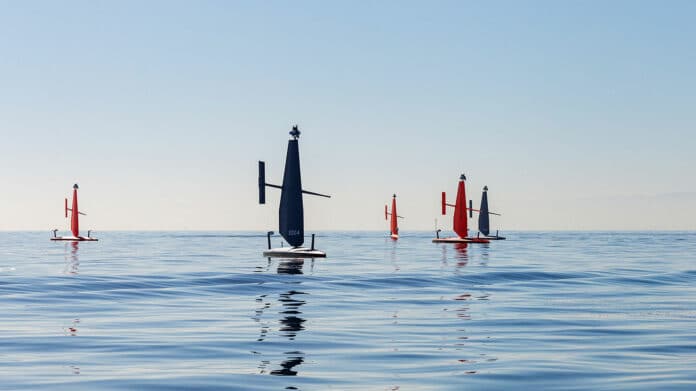California-based USV (uncrewed surface vehicle) manufacturer Saildrone has added a new vessel to its fleet to meet the growing demand for advanced data-collection capabilities at sea.
The new 33-foot-long Voyager is specially designed for the near-shore ocean and lakebed mapping and to meet the challenges of IUU (illegal, unreported, and unregulated fishing), ISR (intelligence, surveillance, reconnaissance), law enforcement and maritime safety, drug interdiction, and border and harbor security.
In addition to multibeam sonar equipment, each craft is equipped with a smart camera array, digital radar, and sub-surface passive acoustics, which help them build a picture of the sea or lakebed down to a depth of 900 feet (300 meters). Powered by wind and solar, the Voyager also features an electric propulsion alternative, useful for low-wind and near-shore operations.
“With our Voyager platform, Saildrone helps to eliminate maritime gaps above and below the ocean surface, reducing risk to mission and risk to force. We want to be a force-multiplier for our partners and allies when it comes to ISR capabilities,” said Richard Jenkins, Saildrone founder, and CEO.
Saildrone’s three USV models – the Voyager along with the 23-foot-long Explorer and 65-foot-long Surveyor – have been developed to balance mission payload flexibility and endurance. The Voyager’s larger size, compared to the Explorer, allows for a more persistent datalink, increased power available for ocean mapping and ISR payloads, and versatile payload integration options.
Saildrone has built 100 of its smaller Explorer craft at its headquarters in Alameda, CA since it was founded years ago. To meet the increasing demand for the new Voyager platform, the company has elected to outsource the production of the Voyager’s wing and keel to Janicki Industries in Washington and the hull to Seemann Composites in Mississippi. Saildrone will continue to produce, install, and internal service components in Alameda.
The Voyager USVs have been undergoing sea trials in the San Francisco Bay and offshore of California since late 2022. The first operational maritime security and ocean mapping missions are due to commence in the American spring. The company is currently producing new Voyagers at a rate of one per week.
Saildrone’s autonomous vehicles have proven their data collection capabilities in numerous operational missions, covering almost 1 million nautical miles from the Arctic to the Antarctic. In addition, the company is looking forward to its continued and close partnership with the US Government and its allies in boosting maritime security around the globe.
